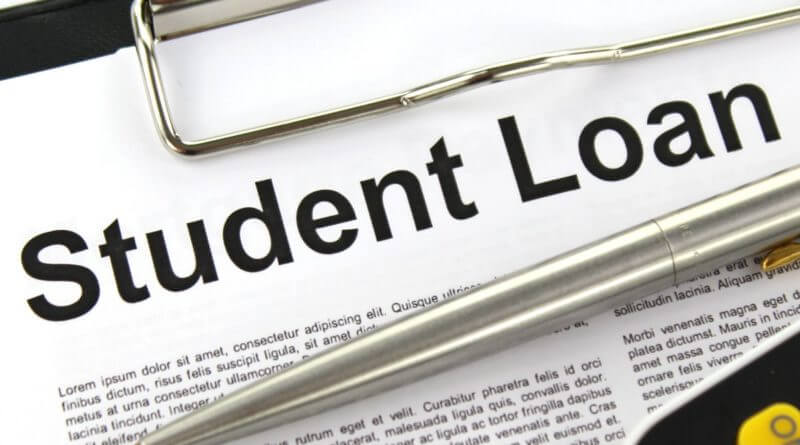
Pamela Cruz. Peninsula 360 Press [P360P].
National student loan indebtedness totals $1.7 trillionwhich are divided into among 43 million studentsThe situation of those who, every day, find it a little more difficult to meet their expenses and pay off a debt that seems like it will never end.
This situation has caused hundreds of thousands of students to think seriously about enrolling in any of the country's universities, as the payments could be chains that will be difficult to break for many years to come.
Gabriel Stewart went into debt for $52,000 after graduating as an audio-visual technician from SAE Expression High School in Emeryville. The expenses were compounded by having a child, so he had to live at his father's house for a few years. He was finally able to move out to live a married life in an apartment, but the burdens continue.
"I was about $52,000 in debt, I couldn't pay rent anywhere because, in addition to student loans, I had credit card debt and that really made it difficult for us to start a family and be free," she said during a briefing held by Ethnic Media Services.
Currently, Gabriel is still uncertain if he will be able to continue paying his debt tomorrow, because although he has moved on and gotten a job at a software company, his work payments have been delayed due to the COVID-19 pandemic.
Delayed payments on your student debt could affect Gabriel's ability to buy a car or shop for a home in the future.
"It's always living with that looming feeling of when the payments start again and how we're going to pay them ... It's a constant stress in my head," he detailed.
For Ro Khanna, representative of the 17th congressional district in California, the issue of student loans is a big problem nationwide, because while there are people who can pay them before the age of 30, there are many who cannot, because their income does not allow it.
The official said student loans should be forgiven for those earning less than $125,000 a year. However, it is unlikely to happen.
"We need to forgive those loans and we have the ability to forgive them. The president has the executive power to say that student loans can be forgiven. The president has already exercised the power to delay student records so he can delay the loans and he can say people don't have to pay for a while," he said.
He noted that if student loans are forgiven, people will be able to raise families, buy homes and start businesses.
"It's really lifting the burdens of this next generation so they can pursue their dreams. So progressives are going to keep pushing for the administration to do this," he added.
Kat Welbeck, Civil Rights counsel at the Student Borrower Protection Center noted that the $1.7 trillion in student debt has become the second largest class of consumer debt in the country, second only to mortgages.
"Black and Latino debtors have less household wealth and take out more loans to pay for school, so they have more debt, which cuts into opportunities for long-term wealth creation," said Welbeck, who added that, over generations, the cycle is likely to repeat itself.
According to the organization Kat works for, about 90 percent of African-American and 72 percent of Latino students go into debt to pay for college compared to about 66 percent of white students.
In that sense, he noted that African-American borrowers have a debt of about 95 percent of their original balance even 20 years after starting college, while in the case of Latinos the debt reaches 83 percent of the total, a very different situation from white borrowers, most of whom pay off their debt about 12 years after starting college.
"If we're going to talk about creating a more equitable and just economy, we can't overlook the disparate effects of the student debt crisis and how it continues to perpetuate many systemic barriers that already exist in this country," he stressed.
In his remarks, Joe Jaramillo, a senior attorney with the Oakland-based Housing and Economic Rights Advocates (HERA), noted that predatory entities, such as for-profit schools, are in particular need of student loan relief and aid.
And for-profit colleges have benefited the most from a business model in which students are pressured to take out expensive federal and private student loans with the promise of a quick education that leads to high salaries.
"There are currently more than a million students enrolled in for-profit schools and studies have shown that they are less likely to graduate, more likely to default on their student loans and more likely to end up with a higher debt load," he said.
The clients of these types of schools are mostly low-income Latino, African-American and older students whose debt is so high that they often end up with garnished wages, no social security benefits and no tax refunds.
"Private debts are treated like any other, such as credit card or loan debts which usually requires them to go to court, which can also be very damaging because many people can't afford legal representation," the lawyer said.
After taking out a school loan that generates such high debt, students "can't afford to buy a house, can't get a car loan, can't get credit because of the damage to their credit score, some are afraid to get married and saddle their partner with the debt.
Andrea Campos was left with $13,000 in debt after majoring in the criminal justice program at Heald College in Hayward - part of the Corinthians institution - and after years of having her debt passed from one creditor to another, HERA was able to help her get her debt forgiven without waiving her credits.
"This has impacted my life significantly ... I had the prospect of being hired, but was denied the opportunity because my debt-to-income ratio was too high and I was considered an at-risk type of employee ... I have also not been approved for credit cards, car loans or home loans," Andrea said.

